|
 Entoloma imbecille Entoloma imbecille
SynonymsEntoloma imbecille
Entoloma aromaticum f. minimum
Entoloma fragile
Rhodophyllus imbecillis
BiostatusPresent in region - Indigenous. Non endemic
Images (click to enlarge)
Caption: Entoloma aromaticum f.
minima
Hk. (holotype): a. carpophores. b. spores. c. cuticle. | 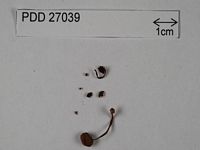
Caption: Dried type specimen
Owner: Herb PDD | 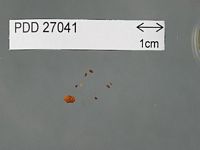
Caption: Dried type specimen
Owner: Herb PDD | 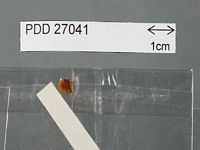
Caption: Dried type specimen
Owner: Herb PDD | 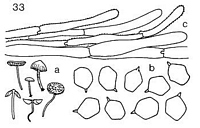
Caption: Entoloma
fragile Hk. (holotype): a. carpophores b. spores.
c. cuticle. | 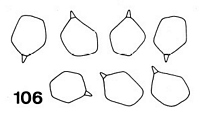
Caption: Fig. 106: Entoloma imbecille Hk (type); spores |
Article: Horak, E. (1980). Entoloma (Agaricales) in Indomalaya and Australasia. Beihefte zur Nova Hedwigia 65: 352 p.
Habitat: Habitat. - On soil, rotten wood (Dacrydium sp.) or on rotting fern (Dicksonia sp.)
Distribution: New
Zealand (type), Solomon Isl.
Notes: The fragile and pale argillaceous carpophores, the earthy to farinaceous smell, the
encrusted cuticular hyphae, the clamp connections on the septa, and the conspicuously
small 5-angled spores are distinctive characters of E. imbecille. The material gathered on
the Solomon Islands agrees in all essential details with the typic collections from New
Zealand.
Article: Horak, E. (1973). Fungi Agaricini Novazelandiae I-V. Beihefte zur Nova Hedwigia 43: 200 p.
Description: Pileus 5-8 mm diam., conical or umbonate-plane,
grey-beige, smooth, dry, hygrophanous. Lamellae (L 10-14, 13), adnexed or emarginate,
exceeded by the margin of the pileus, whitish becoming pink, gill edge concolorous.
Stipe 10-15 x 1 mm, cylindrical, coloured like pileus, white at the base, glabrous,
fistulose, brittle. Taste and odor farinaceous.
Spores
6.5-7 x 5-5.5 µm, 5-6-angled. Basidia 25-30 x 8 µm, 4-spored. Cystidia none.
Cuticle a cutis of repent, cylindrical hyphae (3-10 µm diam.), the thin-walled,
not gelatinized membrane encrusted by brown pigment. Clamp connections lacking.
Habitat: On
soil or rotten wood in forests (under Dacrydium cupressinum, Podocarpus s
pp., Metrosideros spp.). New Zealand.
Article: Horak, E. (1973). Fungi Agaricini Novazelandiae I-V. Beihefte zur Nova Hedwigia 43: 200 p.
Description: Pileus
6-12 mm diam., convex at first becoming umbonate or campanulate, later also
plane and sometimes subdepressed at centre, brown to beige, drying colours fading,
glabrous or slightly fibrillose, striate, hygrophanous, dry. Lamellae (L 6-10,
1 3), adnexed, ventricose, whitish or beige turning pink, gill edge concolorous.
Stipe 10-15 x 1-1.5 mm, cylindrical, coloured like pileus, glabrous, dry, fistulose,
fragile. Odor and taste not distinctive.
Spores
6-7.5 x 5-6 µm, 5-angled. Basidia 25-36 x 8 µm, 4-spored. Cystidia absent. Cuticle
a cutis of repent, cylindrical hyphae (8-12-18 µm diam.), membrane hyaline,
thin-walled and encrusted by brown pigment. Clamp connections abundant.
Habitat: On
rotten debris ( of tree-fern,) or wood (of Dacrydium cupressinum). New
Zealand.
Notes: The
small, fragile carpophores and the small 5-angled spores characterise E.
fragile. Macroscopically it greatly resembles E. melleum Hk., but
the spores of that fungus are considerably larger (8-10 x 6-7 µm).
|